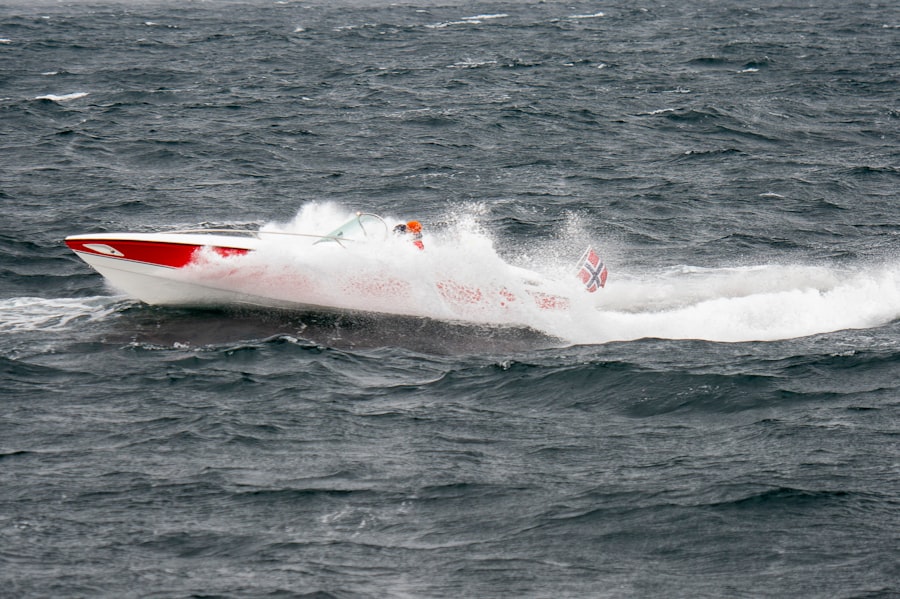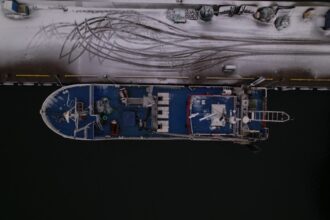Torpedo duds represent a significant challenge in naval warfare, particularly for the United States Navy. These failures occur when a torpedo, designed to detonate upon impact with a target, fails to explode, rendering it ineffective. The implications of such failures are profound, as they not only compromise mission success but also endanger the lives of sailors and the integrity of naval operations.
The phenomenon of torpedo duds has been a persistent issue throughout naval history, affecting both the strategic and tactical dimensions of maritime conflict. The origins of torpedo duds can be traced back to the early days of naval warfare when the technology was still in its infancy. As torpedoes evolved, so too did the complexity of their mechanisms.
Despite advancements in design and engineering, the problem of duds has persisted, leading to extensive research and development efforts aimed at understanding and mitigating this issue. The US Navy’s commitment to addressing torpedo duds reflects a broader recognition of the need for reliability in weapon systems, especially in high-stakes combat scenarios where every second counts.
Key Takeaways
- Torpedo duds are unexploded torpedoes that fail to detonate upon impact, posing a significant threat to naval operations.
- The impact of torpedo duds on naval operations includes potential damage to ships, loss of strategic advantage, and risk to personnel.
- The US Navy has faced a significant torpedo dud problem, leading to the need for a comprehensive solution.
- Identifying the root causes of torpedo duds is crucial for developing effective countermeasures.
- The development of the US Navy’s solution involves advanced technology and rigorous testing to ensure effectiveness in addressing torpedo duds.
The Impact of Torpedo Duds on Naval Operations
The impact of torpedo duds on naval operations is multifaceted, affecting everything from tactical decision-making to overall mission effectiveness. When a torpedo fails to detonate, it not only represents a missed opportunity to neutralize an enemy vessel but also forces naval commanders to reassess their strategies in real-time. This can lead to increased vulnerability for naval forces, as they may find themselves exposed to counterattacks while attempting to reposition or engage with alternative weaponry.
Moreover, the psychological toll on sailors cannot be overlooked. The knowledge that their weapons may fail at critical moments can lead to diminished morale and confidence in their equipment. This psychological aspect is particularly crucial in high-pressure environments where the stakes are high, and the consequences of failure can be dire.
The cumulative effect of these factors underscores the importance of addressing the issue of torpedo duds within the broader context of naval warfare.
The US Navy’s Torpedo Dud Problem

The US Navy has faced its own unique challenges regarding torpedo duds, particularly during significant conflicts such as World War II and the Cold War. Historical accounts reveal that a substantial percentage of torpedoes launched during these periods failed to detonate upon impact. This not only hindered operational success but also raised questions about the reliability of naval weaponry at a time when technological superiority was paramount.
In response to these challenges, the Navy initiated various investigations and studies aimed at understanding the underlying causes of torpedo duds. These efforts highlighted the need for a comprehensive approach that encompassed not only technological improvements but also changes in training and operational protocols. The recognition that torpedo duds could have far-reaching implications for national security prompted a concerted effort to address this issue head-on.
Identifying the Root Causes of Torpedo Duds
| Root Cause | Frequency | Impact |
|---|---|---|
| Manufacturing Defects | 15 | High |
| Improper Storage | 8 | Medium |
| Design Flaws | 5 | High |
| Operational Errors | 10 | Medium |
Identifying the root causes of torpedo duds has proven to be a complex endeavor, involving a thorough examination of both mechanical and environmental factors. One significant contributor to dud incidents is the intricate design of torpedoes themselves. As these weapons have become more sophisticated, so too have their mechanisms for detonation.
Issues such as faulty wiring, manufacturing defects, or even design flaws can lead to failures that render a torpedo inert upon impact. Environmental factors also play a crucial role in the performance of torpedoes. Variations in water temperature, salinity, and pressure can affect the behavior of a torpedo as it travels toward its target.
Additionally, external conditions such as sea state and weather can influence the trajectory and effectiveness of these weapons. Understanding how these factors interact with torpedo design is essential for developing solutions that enhance reliability and performance.
The Development of the US Navy’s Solution
In light of the persistent issue of torpedo duds, the US Navy embarked on a comprehensive development program aimed at creating more reliable weapon systems. This initiative involved collaboration between engineers, scientists, and military personnel to identify innovative solutions that would address both mechanical and environmental challenges. The goal was not only to reduce the incidence of duds but also to enhance overall operational effectiveness.
The development process included rigorous testing and evaluation phases, where prototypes were subjected to various conditions to assess their performance. Feedback from naval personnel who had experienced dud incidents was invaluable in shaping the design and functionality of new torpedoes. This collaborative approach ensured that the solutions developed were not only technologically advanced but also practical for real-world applications.
The Technology Behind the US Navy’s Solution

The technology behind the US Navy’s solution to the torpedo dud problem is rooted in advancements in materials science, engineering, and computer modeling. Modern torpedoes are equipped with sophisticated guidance systems that utilize sonar and other sensors to track targets more accurately. These enhancements significantly improve the likelihood of successful detonation upon impact.
Additionally, innovations in explosive materials have played a crucial role in increasing reliability. New formulations are designed to be more stable and responsive under various conditions, reducing the likelihood of failure due to environmental factors. The integration of advanced electronics has also allowed for better diagnostics and monitoring capabilities, enabling real-time assessments of weapon readiness before deployment.
Testing and Implementation of the Solution
The testing and implementation phase of the US Navy’s solution involved extensive field trials designed to simulate real-world conditions as closely as possible. These trials were critical for evaluating the performance of new torpedoes under various scenarios, including different water temperatures, salinity levels, and sea states. By subjecting these weapons to rigorous testing, the Navy aimed to ensure that they would perform reliably in combat situations.
Feedback from sailors who participated in these tests was instrumental in refining the final designs. Their insights helped identify potential issues that may not have been apparent during initial development phases.
The Effectiveness of the US Navy’s Solution
The effectiveness of the US Navy’s solution to the torpedo dud problem has been demonstrated through improved performance metrics and reduced dud rates in operational settings. As new torpedoes were deployed, reports indicated a significant decrease in instances where weapons failed to detonate upon impact. This improvement not only enhanced mission success rates but also bolstered sailor confidence in their equipment.
Moreover, the successful implementation of these solutions has had broader implications for naval strategy and tactics. With more reliable weapon systems at their disposal, naval commanders can engage with greater assurance, allowing for more aggressive postures during operations. This shift has contributed to an overall enhancement of naval capabilities in an increasingly complex global security environment.
Lessons Learned from Addressing Torpedo Duds
The journey toward addressing torpedo duds has yielded valuable lessons for the US Navy and other military organizations worldwide. One key takeaway is the importance of interdisciplinary collaboration in problem-solving efforts. By bringing together experts from various fields—engineering, materials science, and military operations—the Navy was able to develop comprehensive solutions that addressed both technical and operational challenges.
Additionally, the experience underscored the necessity of continuous testing and feedback loops in military technology development. Engaging with personnel who operate these systems on a daily basis provided critical insights that shaped design improvements and operational protocols. This emphasis on adaptability and responsiveness is essential for maintaining technological superiority in an ever-evolving landscape of warfare.
Future Implications for Naval Warfare
Looking ahead, the implications of overcoming torpedo duds extend beyond immediate operational concerns; they signal a broader commitment to innovation within naval warfare.
The lessons learned from addressing torpedo duds can inform future developments across various weapon systems, fostering a culture of continuous improvement within military organizations.
Furthermore, advancements in artificial intelligence and machine learning may play a pivotal role in future naval operations. These technologies could enhance predictive maintenance capabilities for weapon systems, allowing for proactive measures that mitigate potential failures before they occur. As naval warfare continues to evolve, embracing new technologies will be essential for maintaining operational effectiveness in an increasingly complex battlefield.
The US Navy’s Commitment to Overcoming Torpedo Duds
In conclusion, the US Navy’s commitment to overcoming torpedo duds reflects a broader dedication to ensuring operational readiness and effectiveness in maritime warfare. Through rigorous research, development, testing, and implementation processes, the Navy has made significant strides in addressing this longstanding issue. The lessons learned from this journey not only enhance current capabilities but also lay the groundwork for future innovations in naval warfare.
As global security dynamics continue to shift, maintaining reliable weapon systems will remain paramount for naval forces worldwide. The US Navy’s proactive approach serves as a model for other military organizations facing similar challenges, emphasizing the importance of collaboration, adaptability, and technological advancement in overcoming obstacles on the path to operational excellence.
During World War II, the U.S. Navy faced significant challenges with torpedoes that often failed to detonate upon impact, a problem that was critical to address for effective naval warfare. The Navy’s solution involved rigorous testing and redesigning of the torpedo’s firing mechanisms, which eventually led to a more reliable and effective weapon. For a deeper dive into the intricacies of this issue and how it was resolved, you can explore a related article on the topic by visiting In The War Room. This resource provides a comprehensive look at the historical context and technical solutions that were implemented to overcome the torpedo dud problem.
WATCH THIS! America’s Nuclear Navy Was Born From Espionage
FAQs
What were the issues with the US Navy’s torpedoes?
The US Navy experienced problems with their torpedoes during World War II, including issues with duds, premature detonation, and erratic performance.
How did the US Navy address the torpedo dud problem?
The US Navy established the Torpedo Improvement Program to address the issues with torpedo duds. This program focused on identifying and rectifying the causes of the duds, including faulty detonators and depth control mechanisms.
What specific changes were made to fix the torpedo duds?
The US Navy made several changes to fix the torpedo duds, including redesigning the detonators, improving the depth control mechanisms, and implementing stricter quality control measures during production.
Did the US Navy’s efforts to fix torpedo duds prove successful?
Yes, the US Navy’s efforts to fix torpedo duds were successful. The improvements made through the Torpedo Improvement Program resulted in a significant reduction in the number of duds and an overall improvement in torpedo performance.
How did the US Navy’s efforts impact the outcome of World War II?
The successful resolution of the torpedo dud problem by the US Navy had a significant impact on the outcome of World War II. The improved torpedo performance contributed to the success of naval operations and played a crucial role in the Allied victory.




